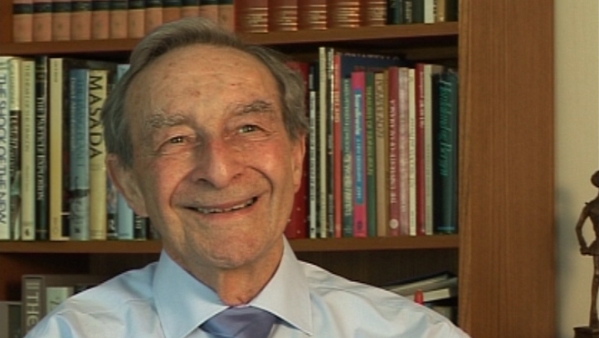NEXT STORY

Background to Harry Emeléus's work with halogens
RELATED STORIES

NEXT STORY

Background to Harry Emeléus's work with halogens
RELATED STORIES


|
Views | Duration | |
|---|---|---|---|
| 41. The Royal Commission for the Exhibition of 1851 scholarship | 72 | 02:18 | |
| 42. Rules and regulations of university life in Cambridge | 101 | 03:59 | |
| 43. Cambridge's famous first female graduate | 158 | 02:37 | |
| 44. How I horrified a Cambridge head porter | 106 | 01:22 | |
| 45. What should I do in the lab? | 69 | 02:16 | |
| 46. Background to Harry Emeléus's work with halogens | 67 | 01:13 | |
| 47. Testing the properties of iodine monochloride | 69 | 05:18 | |
| 48. Before pride comes a fall | 61 | 05:16 | |
| 49. Making boron trifluoride | 81 | 02:59 | |
| 50. Attending the lectures of the Cambridge notables: Harry... | 73 | 01:17 |


Now, in the laboratory I had a talk with Emmy, about what to do, he said, 'Well, you can carry on doing your Master's work, if you like', and I said, 'Well, I was very interested in that, but I think I'd get more out of it if I did something closer to your own interest'. So he told me the sorts of things he was doing, gave me a couple of theses to read, introduced me to Alf Woolf, who was in the lab, and in short, I started to look at the electrical conductivity and properties of iodine monochloride.
He put me in a lab with Gordon Stone, there were two of us in this lab, Gordon was also a very bright student, he seemed to have enormous respect for me, to begin with, because I had this 1851 scholarship, but we, throughout our careers, have had a very good working relationship, and I've certainly admired the wonderful work he's been doing. But I have to say, that during the first term, which was called Michaelmas rather than first term, Gordon, who was working on boron hydrides, had repeated explosions which blew up his vacuum line, and were really quite scary. And so, in the end, I said to Emmy, 'Well, you know, much though I admire Gordon, and get on with him as a person, I think I'd be safer in another part of the lab'. So I came out into the main lab, and assembled my vacuum line there. Others in the lab were Mimi Newing, who was in my final year in Melbourne, she then joined CSIRO, came over, got a Cambridge Blue in tennis, and got a very good PhD with Harry Emeléus, working in silicon chemistry with, I think, Alfie Maddock as her main tutor. And there was Alf Woolf, Bob Haszeldine was there, he'd just got his PhD from Cambridge, and Alan Sharpe, of course, and Alf Maddock, whom I've mentioned, were the two members of staff.
Norman Greenwood (1925-2012) was born in Australia and graduated from Melbourne University before going to Cambridge. His wide-ranging research in inorganic and structural chemistry made major advances in the chemistry of boron hydrides and other main-group element compounds. He also pioneered the application of Mössbauer spectroscopy to problems in chemistry. He was a prolific writer and inspirational lecturer on chemical and educational themes, and held numerous visiting professorships throughout the world.
Title: What should I do in the lab?
Listeners: Brian Johnson
Professor Brian FG Johnson FRS, FRSE, FRS Chem, FAcad Eu, FAS. Professor of Inorganic Chemistry University of Edinburgh 1991-1995, Professor of Inorganic Chemistry University of Cambridge 1995-2005, Master Fitzwilliam College Cambridge 1999-2005. Research interests include studies of transition metal carbonyls, organometallic chemistry, nano- particles and homogeneous catalysis. Professor Johnson is the author of over 1000 research articles and papers.
Tags: The Royal Commission for the Exhibition of 1851 scholarship, boron hydrides, Melbourne University, CSIRO, Harry Emeléus, Alf Woolf, Gordon Stone, Mimi Newing, Alfie Maddock, Robert Haszeldine, Alan Sharpe
Duration: 2 minutes, 16 seconds
Date story recorded: May 2011
Date story went live: 25 November 2011